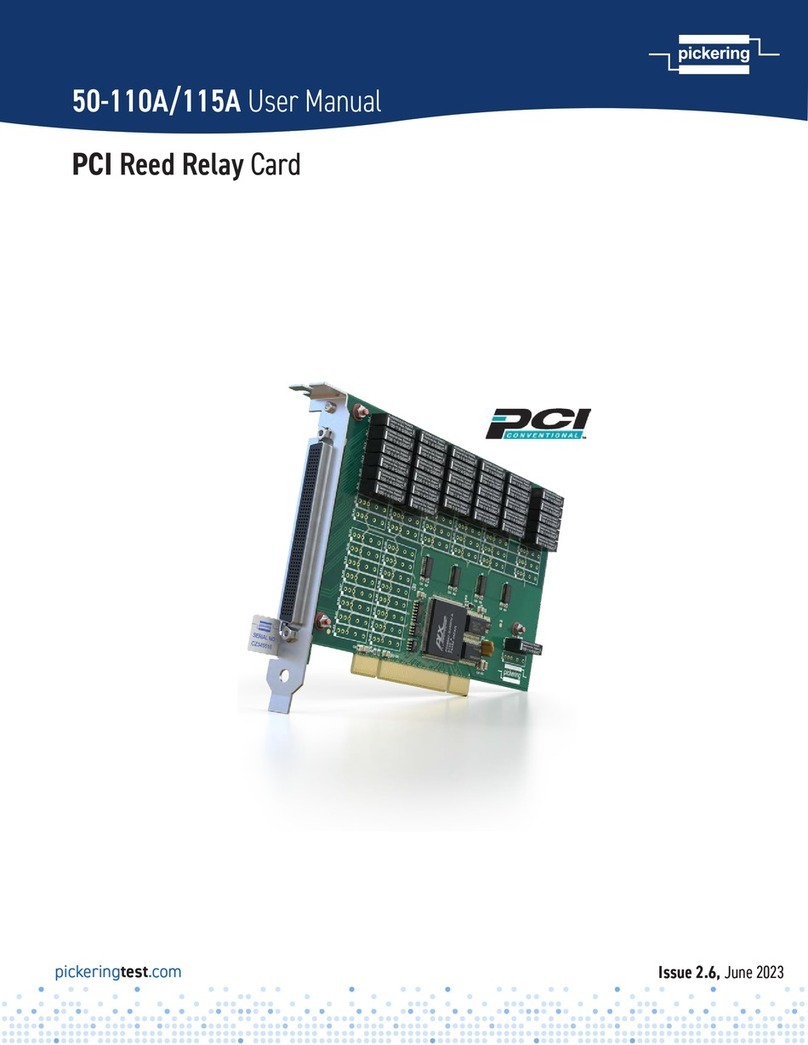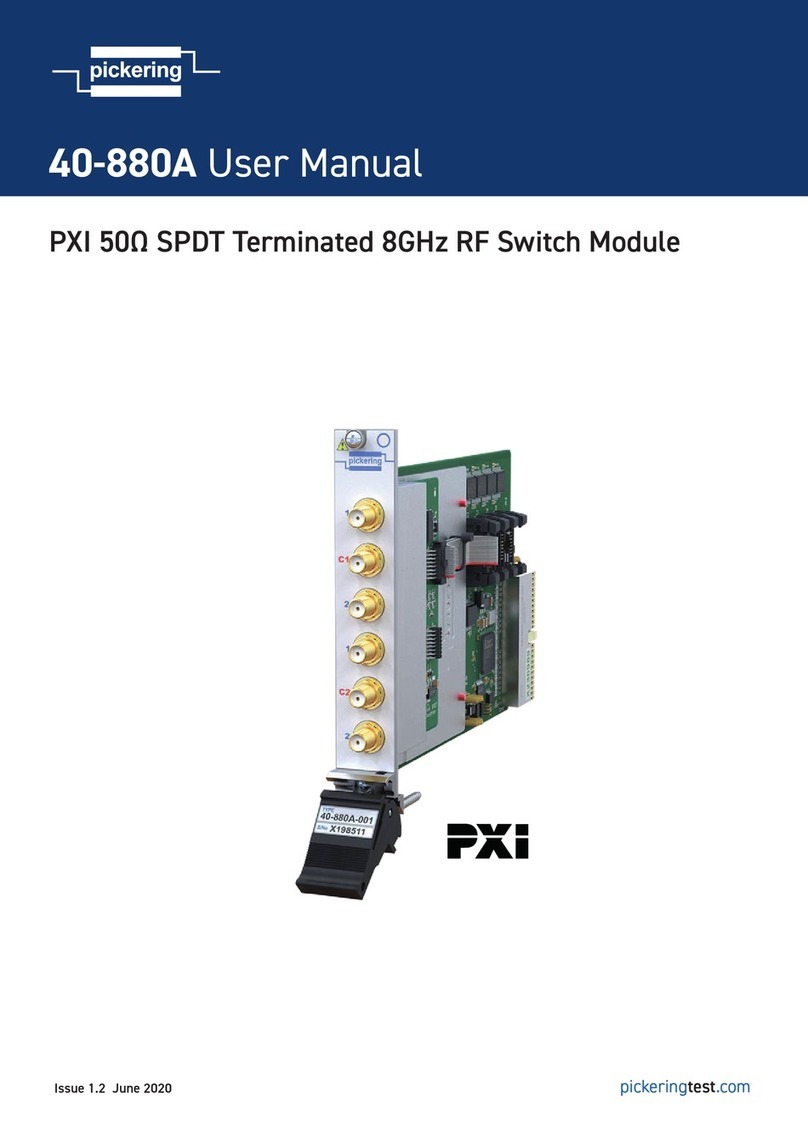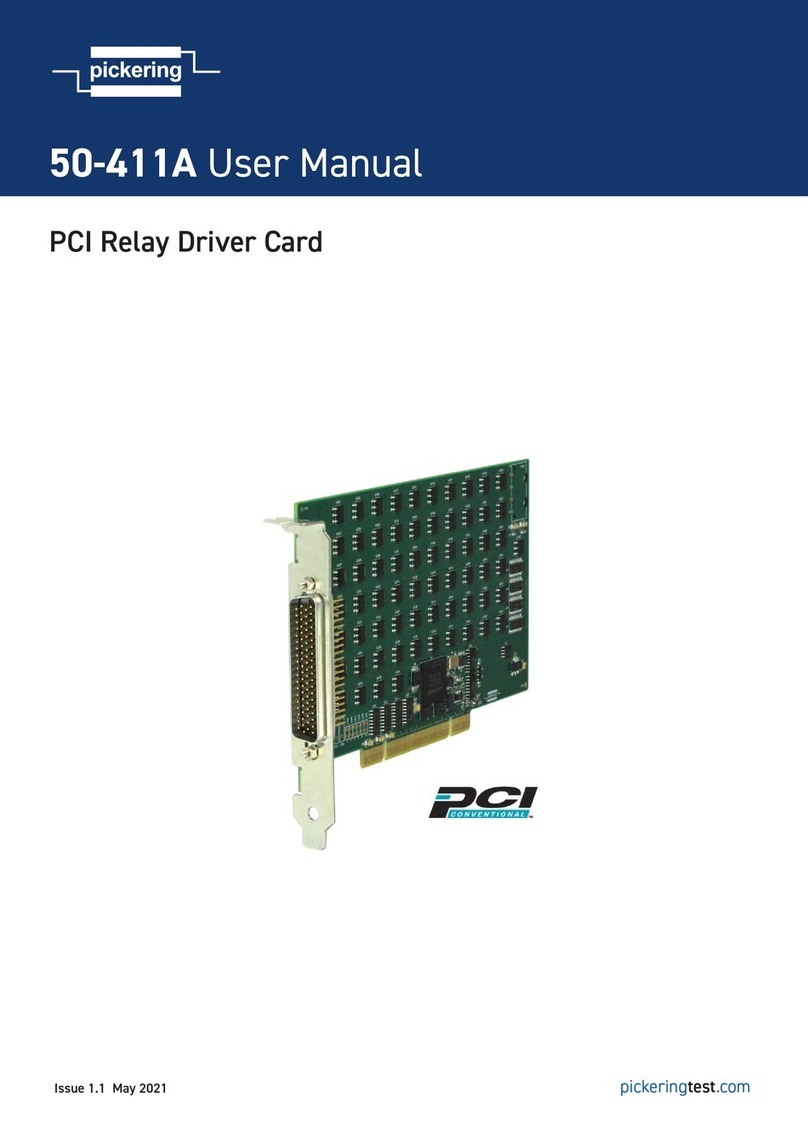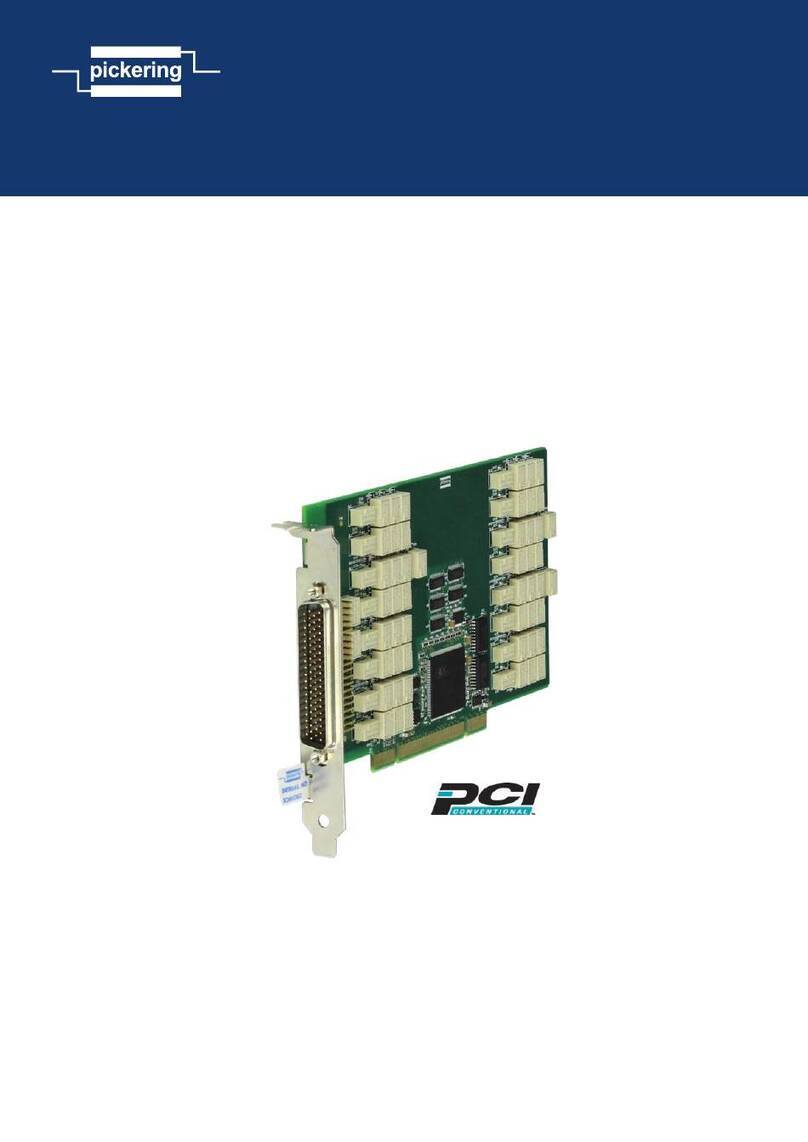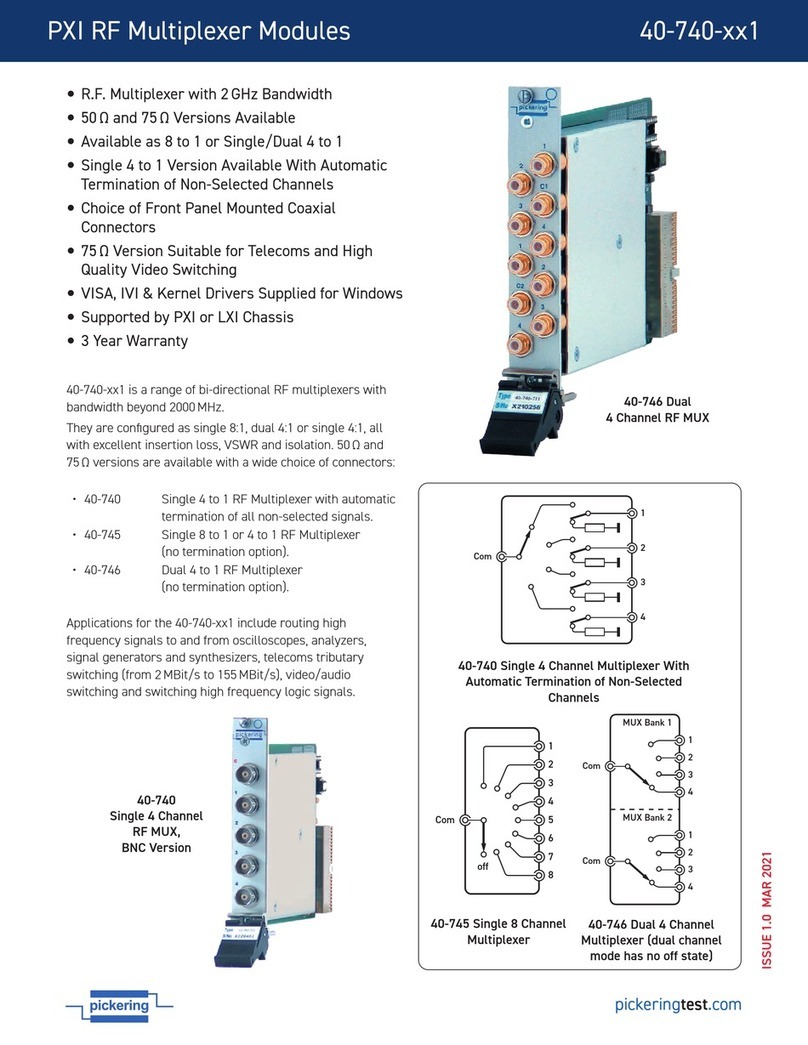pickeringtest.com
PCI Strain Gauge Simulator 50-265
ISSUE 2.2 MAY 2018
ySimulates Resistive Strain Gauge Bridge Circuits
y6, 4 or 2 Simulators Per Card
ySimple Software Operation
yFine Resistance Adjustment Over Full Operating Range
yVISA & Kernel Drivers Supplied for Windows
y3 Year Warranty
Functional Diagram for a single channel of the 50-265 Strain Gauge Simulator Card
CALIBRATION PORT
CONNECTOR
CALIBRATION
MUX
PROGRAMMABLE
RESISTOR
EXCITATION PORTBRIDGE OUTPUT
FROM OTHER STRAIN
GAUGE CHANNELS
INTERNAL
EXCITATION
SOURCE
CH1 Excite1
CH1 Excite2
CH1 Out2
CH1 Out1
RESISTIVE STRAIN GAUGE SIMULATOR CHANNEL 1
2 3 4 5 6
The 50-265 card has 6, 4 or 2 simulation channels and
is ideal for testing strain gauge meters in a wide variety
of industrial control systems. It provides a simple way
of replacing in house developed sensors with a low cost
simulator that has excellent performance. The card uses
the same resistor bridge techniques that real life strain
gauges are based on, ensuring accurate emulation under
all conditions.
Each channel includes an independent input for excitation
voltage and a bridge output strain gauge simulation The
excitation voltage port can be driven by an AC or DC
source. The bridge circuit includes three fixed resistors and
a fourth programmable resistor that can be adjusted over
a narrow range with fine setting capability and excellent
accuracy. The adjustment range is sufficient to simulate
quarter, half or full bridge circuits. The standard bridge
impedances are 350 Ω, 1 kΩ, 1.5 kΩ, 2 kΩ and 3 kΩ.
The simulator is extremely easy to use, the variable
resistor element of each channel can be programmed
using a simple resistance call. The resistance required to
balance the bridge can be read by the user, and the value
sent to the simulator can be varied above and below the
balance point to simulate extension and compression of a
strain gauge.
The 50-265 has a simple means of user verification using
a DMM connected to the calibration port. Any of the
channels can be selected and their functionality checked
without disconnecting the card from the test system. The
calibration port can also be used to find the bridge balance
setting using the internal DC excitation source.
Adjustment is not routinely required thanks to the factory
calibration information and the excellent long term stability
of the bridge.
We can offer other models of strain gauge simulator and
have a wide range of precision resistance modules that
are suitable for simulating individual strain gauges. Please
contact your local sales office for more information.






